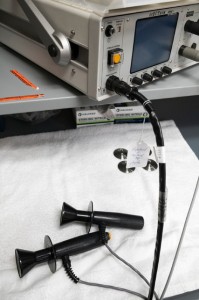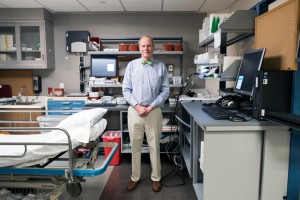Kitty Dukakis, a Beneficiary of Electroshock Therapy, Emerges as Its Evangelist

Kitty Dukakis and her husband, Michael, a former governor of Massachusetts, last month with a therapy support group at their home in Brookline, Mass. Credit M. Scott Brauer for The New York Times
BROOKLINE, Mass. — When Michael Dukakis lost the presidential election in 1988, his wife, Kitty, felt as if she had been squashed in a compactor, all the air forced out of her. Her even-keeled husband went back to work as governor of Massachusetts; she started binge drinking.
“An alcoholic can contain himself for only so long,” Mrs. Dukakis would later write. “When a crisis hits, the restraints snap.”
Her drinking masked a long-smoldering depression that eventually led her to receive electroconvulsive therapy, also known as electroshock therapy or ECT.
Like most people, she had no idea that the procedure was still used. She thought it a relic, scrapped after it was depicted as an instrument of torture in the 1975 movie “One Flew Over the Cuckoo’s Nest.”
But Mrs. Dukakis was desperate. Rehabilitation, talk therapy and antidepressants had failed to ease her crippling depression, so in 2001, at age 64, she turned to shock therapy.
To her amazement, it helped.
After the first treatment, Mrs. Dukakis wrote, “I felt alive,” as if a cloud had lifted — so much so that when Mr. Dukakis picked her up at Massachusetts General Hospital, she astonished him by proposing that they go out to dinner.
“I was so shocked I almost drove off Storrow Drive,” Mr. Dukakis recalled. “I had left this wife of mine at the hospital a basket case just the night before.”
Now, 15 years later, the Dukakises have emerged as the nation’s most prominent evangelists for electroconvulsive therapy.
Truth be told, there is not much competition. Few boldface names who have had the treatment will acknowledge as much; the stigma is still too great. Exceptions include Carrie Fisher, the actress and writer who died Tuesday, and Dick Cavett, the talk-show host; both have openly discussed their positive experiences.
Electroconvulsive therapy is not a one-and-done procedure. Mrs. Dukakis, 80, still receives maintenance treatment every seven or eight weeks. She said that she had minor memory lapses but that the treatment had banished her demons and that she no longer drank, smoked or took antidepressants.
She went public with her use of electroshock in 2006 in her book, “Shock: The Healing Power of Electroconvulsive Therapy,” which she wrote with the journalist Larry Tye.

Treatment electrodes connected to an electroconvulsive therapy device at McLean Hospital in Belmont, Mass., where Mrs. Dukakis receives her maintenance therapy. Credit M. Scott Brauer for The New York Times
These days she and her husband — who is 83 and still teaching full time at Northeastern University — devote their time to promoting ECT.
They hold support groups at their Victorian home outside Boston here; manage a website, ecttreatment.org; and answer inquiries from people seeking guidance. Their efforts include trying to persuade the Department of Veterans Affairs to make the procedure more accessible. Mrs. Dukakis also gives speeches around the country and abroad.
As they bear witness, the Dukakises face decades of prejudice against a treatment that Mrs. Dukakis credits with saving her life.
“I have lots to be grateful for,” she says, snuggling her cockapoo puppy. “And lots to look forward to.”
Wary of Treatment
During the 1988 campaign, Mrs. Dukakis said, she generally limited herself to one shot of vodka at night, though she did go on a couple of benders that forced her to cancel appearances. All that changed with the election, when her husband lost 40 states to George Bush.
Two days later, her long-masked depression came roaring back; she lost herself in the bottle and spent the next several years in and out of rehab.
In the mornings, she would see her husband off to work, then drink, retreat to her room and pass out. Her family sometimes found her passed out in her vomit.
“Once I came home and couldn’t find her,” Mr. Dukakis recalled. “I finally went up to the third floor, and I saw what I thought was a bunch of rags on the floor. It was my wife. This beautiful …” His voice broke off. “Jesus,” he said.
Though she and her husband had heard about electroconvulsive therapy, they were wary. Mr. Dukakis’s older brother, Stelian, had had an ECT session in 1951 and was never the same.
Mrs. Dukakis’s sister’s husband also had ECT therapy in the 1950s but had kept it secret. When he learned that Mrs. Dukakis was considering it, he told her that he had had a positive outcome; he lost some memory, but his psychosis was gone.
Benefits, With Risks
No one knows exactly how electroshock eases depression, if only temporarily, in many people. It sends an electrical current to the brain that triggers a brief seizure. The result is like rebooting a computer, say those who have had positive results.
Shock therapy was developed in 1938. Back then, patients were not given anesthesia, and the electrical current was much stronger. It was in fairly wide use by the 1960s. Patients included Sylvia Plath, the poet; Clementine Churchill, the wife of Winston Churchill; and Senator Thomas F. Eagleton of Missouri, the 1972 Democratic vice-presidential candidate, who was booted off the ticket when his treatment was made public.

“Depression is a chronic and recurring illness that requires good lifetime management,” Dr. Charles Welch, Mrs. Dukakis’s psychiatrist, said. Credit M. Scott Brauer for The New York Times
But electroshock fell out of favor with the growth of antidepressants and the release of “Cuckoo’s Nest.”
Critics say proponents deliberately minimize the dangers — starting with their use of sanitizing nomenclature like “ECT.”
Among the criticisms: that memory problems can be far more severe than doctors say; that relapses are almost inevitable; and that the procedure causes brain damage, a point in sharp dispute.
Jonathan Cott, a writer and editor, wrote in his 2005 book, “On the Sea of Memory: A Journey From Forgetting to Remembering,” that his shock therapy had wiped out 15 years of memories. They included events like the murder of John Lennon, whom Mr. Cott had interviewed just three days before the shooting. Mr. Cott forgot books he had written and edited and friends listed in his address book.
“The pact with the devil that is ECT,” he wrote, “requires that one trade certain memory loss (short-term, long-term or both), possible brain damage and cognitive dysfunction for the temporary relief of depression.”
Despite its negative image, ECT has remained the go-to option for severely depressed people who do not respond well to antidepressants or other treatments. It is usually fast acting, which can mean the difference between life and death in patients who are suicidal.
“Public awareness of the use of ECT has waxed and waned, but in medical practice, we have continuously used it,” said Dr. Sarah Lisanby, a specialist in ECT at the National Institute of Mental Health.
In the old days, patients convulsed during therapy sessions, sometimes so violently that they broke their bones or teeth. Today, with anesthesia and muscle relaxants, such reactions are rare.
“ECT is the single most efficacious treatment that we have and the treatment of choice if you absolutely had to get someone out of a severe depression within a day or two,” said Steven D. Hollon, a professor of psychology at Vanderbilt University, who has studied the treatment of depression.
But, he added, electroconvulsive therapy can potentially cause serious side effects, most notably long-term memory problems, some of which are temporary. Even patients whose depression goes into remission almost always need maintenance treatment, with ECT, antidepressants or both.
A National Institute of Mental Health study conducted in 2014 and released this year found that new ECT techniques designed to better protect memory, in combination with antidepressants, fully relieved symptoms in 61 percent of severely depressed elderly patients; some were still well six months later. (Of the others, 28 percent dropped out and 10 percent did not improve.)
Mrs. Dukakis receives her maintenance therapy at McLean Hospital in suburban Boston, one of the world’s largest and most renowned psychiatric hospitals. McLean does about 10,000 such treatments a year, up from 2,500 treatments in 1999, Dr. Stephen Seiner, McLean’s director of ECT, said. Each patient generally receives eight to 20 treatments.

Mrs. Dukakis, right, hosting an electroconvulsive therapy support group at her home in December. Credit M. Scott Brauer for The New York Times
“For most patients,” said Mrs. Dukakis’s psychiatrist, Dr. Charles Welch, “depression is a chronic and recurring illness that requires good lifetime management.”
Varied Experiences
It was a frosty Sunday night in December, and Mrs. Dukakis, stylishly dressed in a starched white blouse and royal blue sweater with pearls, was seated on her living room couch. Her husband, in a flannel shirt and khakis, sat beside her.
Nine others, who make up part of their ECT support group, sat in a circle. Three women had had shock therapy and came with their husbands; another woman and two men came on behalf of deeply depressed family members and wanted to learn more.
As the meeting began, Mrs. Dukakis explained that she and her husband would be celebrating “my 50th birthday.” People chuckled, assuming she was joking about her age, but she did not appear to be, prompting Mr. Dukakis to remind her that it would be her 80th.
Two women who had received ECT spoke positively about it. A third, a doctor named Barrie Baker, had a very different experience.
“After the first time, I couldn’t remember the season or the year,” Dr. Baker said. “I don’t know if I’ve ever fully recovered.”
She said she preferred being treated with medications.
“You can stop a medication, and the side effects will go away,” she said. “But the things that happen with ECT can take months to go away.”
The group discussed whether it was better to hold off on ECT as a last resort or seek it sooner if drugs did not help immediately.
“Given Kitty’s experience,” Mr. Dukakis said, “I can’t support the notion that you try everything else before you try ECT. Those 17 years before we finally got to ECT were brutal.”
A woman named Deborah, who came on behalf of her husband and did not want her last name used, said her husband had been so depressed, she had dropped a letter in Mrs. Dukakis’s mailbox several months ago seeking help.
Mrs. Dukakis arranged for the man to meet with Dr. Welch. He received ECT but remains severely depressed. Still, Deborah is grateful to the Dukakises.
“They call to find out how my husband is,” she said. “They have been there for him. They have hundreds of people like that in their life, and they never stopped caring.”
Category:



Leave a Reply